

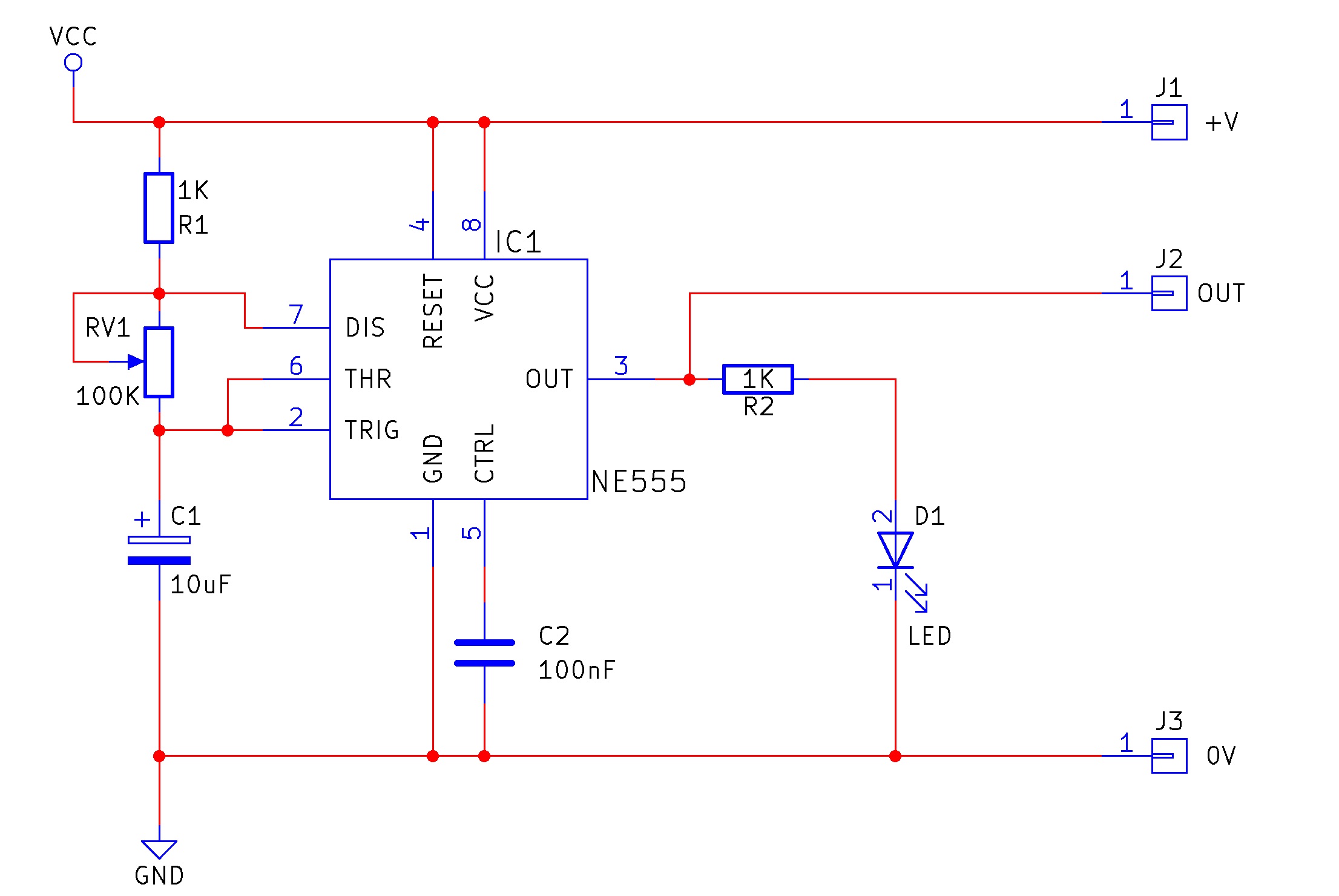
The 555 timer IC is arguably one of the most famous integrated circuits that have ever been manufactured. The 555 is such a popular chip that despite having been invented in 1972 it is still produced in the millions each year to this day.
Ever since the first 555 timer, many variations have been designed such as the 556 which includes two 555 timers on the same chip, CMOS versions that use less power, and SMD varieties that allow the 555 to be used on the smallest PCBs.
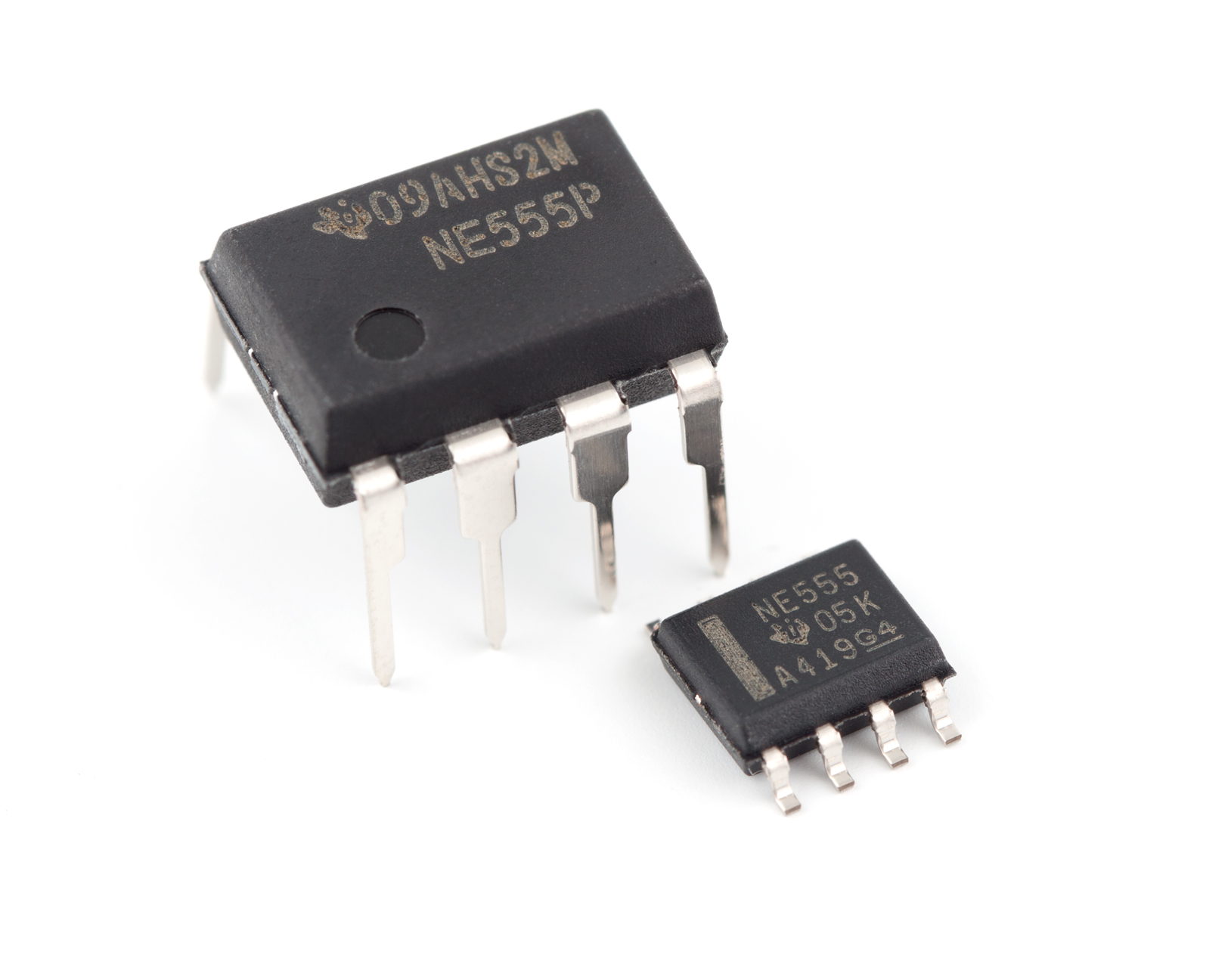
As the name suggests, the 555 timer is primarily designed as a timer IC which can be used to either produce a constant square wave (astable mode), or a one-shot square signal (monostable mode).
However, the 555 can also be used to do many other things, such as a digital modulator, a latch, and a PWM generator. All of these functions can be realised with the use of external components and clever circuit routing.
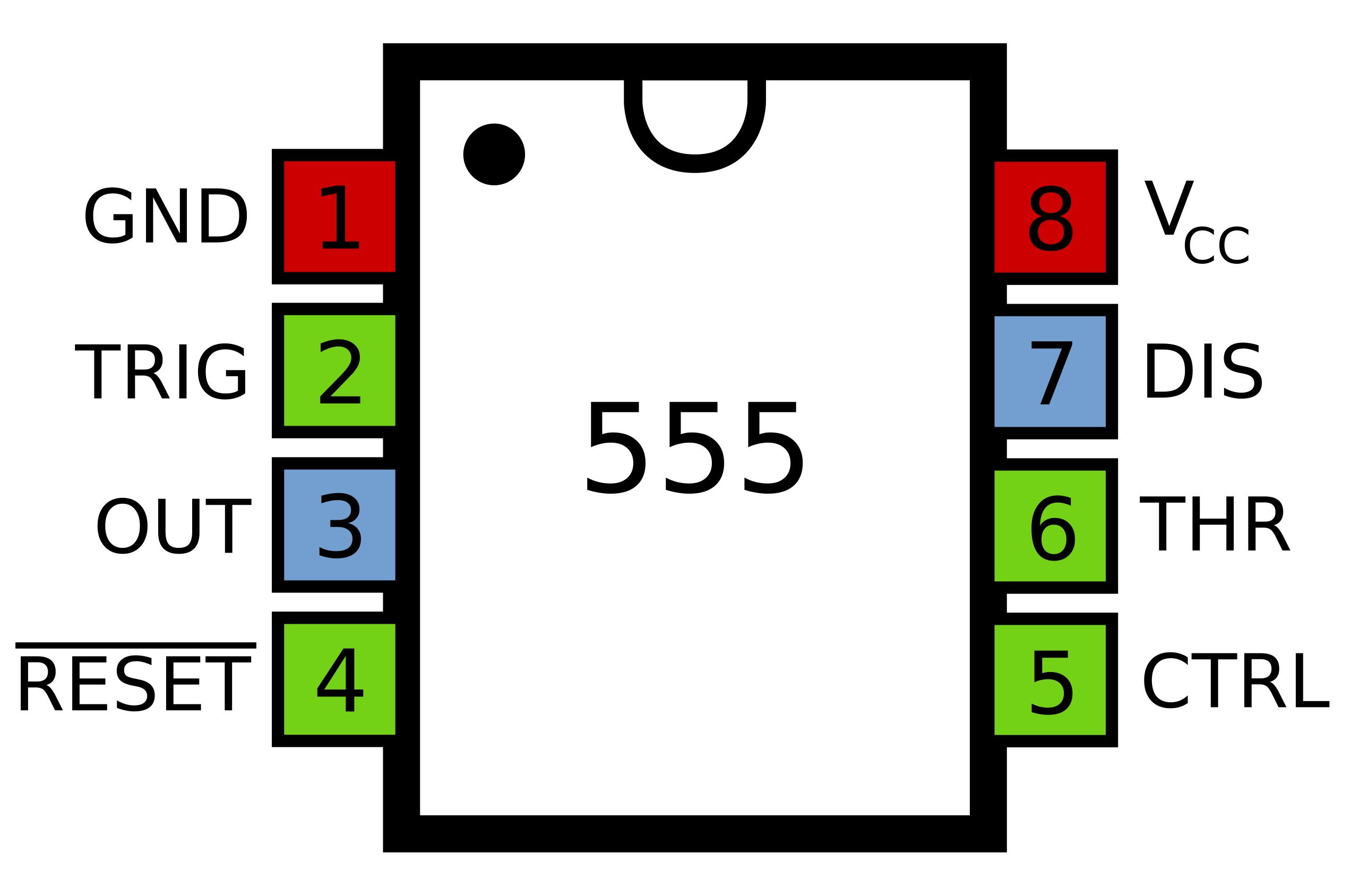
The 555 timer used to be a staple in many circuits, but its used in modern electronics is not as obvious. Many low-cost electronics devices from the far-east will often use them (such as relay controls and timers).
The popularity of the 555 timer in the past also sees it in older electronic systems that are still in use. If these circuits fail, a new 555 can replace it!
The 555 Astable is a circuit that configures the 555 timer IC to output a square wave that switches between 0V and VCC (the power supply of the circuit). The speed at which this output changes (i.e. the frequency), depends on the values of the capacitor C1, the resistor R1, and the potentiometer RV1.
Simply put, the 555 timer charges and discharges the capacitor C1 using R1 and RV1 as a throttle. If the resistance of RV1 and R1 are low, then the capacitor can charge quickly meaning that the output of the 555 Astable changes quickly (higher frequency). If these resistances are high, then the capacitor charges and discharges more slowly meaning that the output of the 555 astable switches slower (lower frequency).
Looking at the internal circuit diagram of the 555 timer the following can be seen 3 resistors (highlighted in green. 5kΩ each, hence the name 555)
✓ - A flip flop (highlighted in blue. Has two resets)
✓ - Two comparators (one red (call this comparator 1), and one orange (comparator 2))
✓ - One inverter (highlighted in pink. Connects to the output)
✓ - One NPN transistor (highlighted in turquoise)
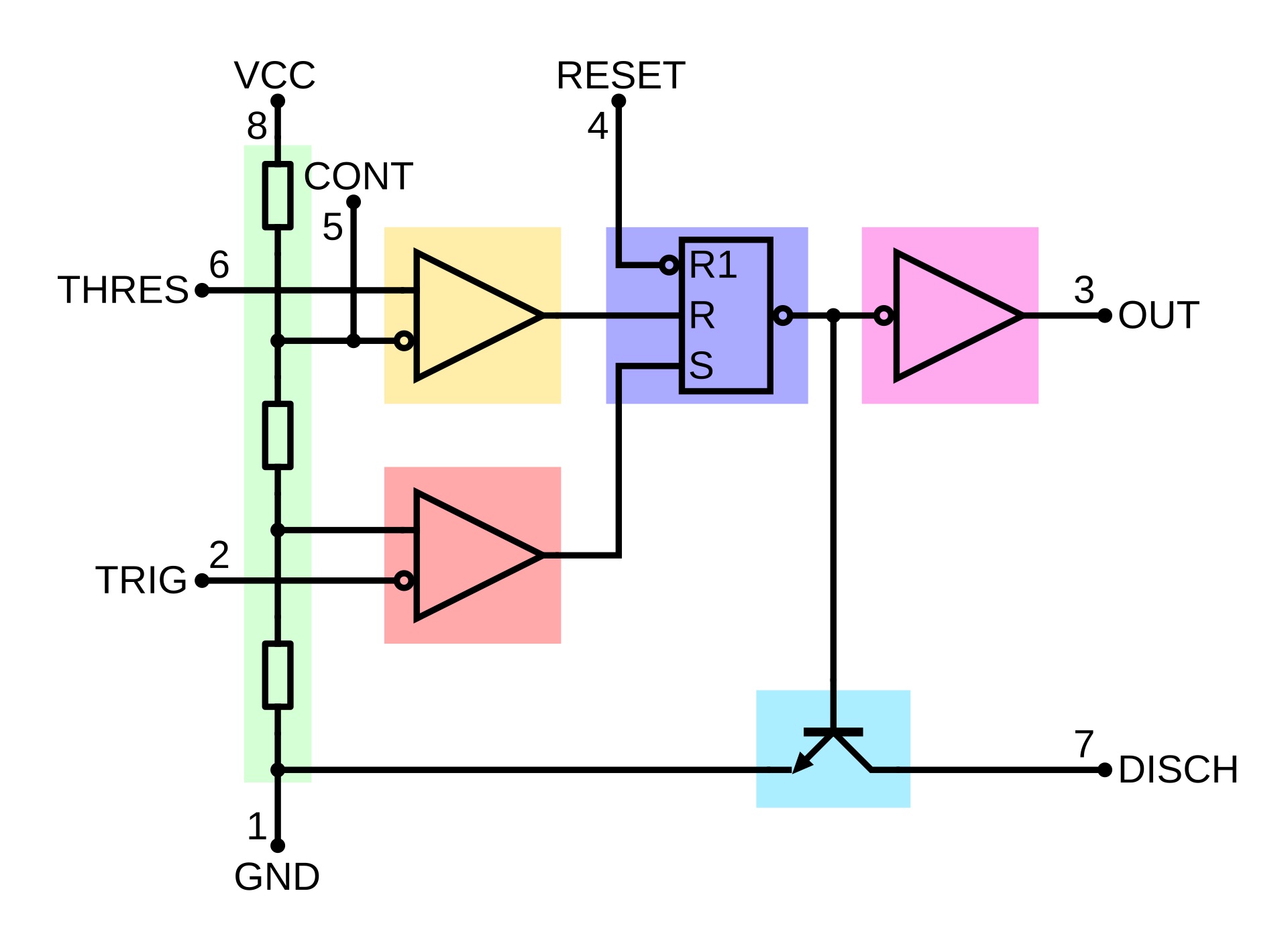
Initially the voltage across the capacitor C1 is 0V, this will result in the voltage on COMP1 inverting input to also be 0V. Since the COMP1 non-inverting input is connected to 1/3 VCC this means that the V+ input is larger than the V– input. This results in the output of COMP1 turning on (9V), which in turn turns the flip flop output off. The output of the flip flop is connected to an inverter which inverts this off signal into an on signal which means the output is now on (9V).
As the flip flops output is currently off the transistor will also be off and therefore the capacitor will charge through R1 and the potentiometer (RV1). While the capacitor charges the voltage across the capacitor will begin to increase.
While all of this is happening the voltage on the inverting input of COMP2 is always connected to 2/3VCC (created by the potential divider made by the three 5kΩ resistors).
Eventually the voltage across the capacitor will become larger than 2/3 VCC which means that the voltage on the non-inverting input of COMP2 will become larger than the inverting input. When this happens the output of COMP2 will turn on which will reset the flip flop. Remember how the flip flop has an inverting output so when the flip flop is reset the output will switch on. This means that the output will turn off (since it is inverted again).
When the flip flop resets the transistor is turned on as well. This means that the capacitor will begin to discharge through the potentiometer, into the discharge pin, through the transistor and then back to ground.
Eventually the voltage across the capacitor will fall bellow 1/3 VCC and the whole process happens all over again, and again, and again!
This circuit is known as an astable circuit because the circuit is not stable in any state (on or off). The output of the 555 timer is connected to an LED so when this circuit operates the LED will turn on and off. But how is the rate of flashing controlled? How can the flashing be slowed down or made faster?
This is done by the potentiometer! The time it take for the capacitor to discharge and charge is dependent on R1 and the potentiometer. If the potentiometers resistance is increased then it takes more time for the capacitor to charge and discharge which results in the LED flashing becoming more slow. If the potentiometers resistance is decreased then it takes less time for the capacitor to charge and discharge which results in the LED flashing becoming faster.
| Component | PCB Reference | Quantity | Looks Like |
|---|---|---|---|
| 8 DIP Socket | IC1 | 1 |  |
| 555 Timer IC | IC1 | 1 |  |
| 100nF Ceramic Disc Capacitor | C1 | 1 |  |
| 10uF Electrolytic Capacitor | C2 | 1 |  |
| 1K Resistor | R1, R2 | 2 |  |
| 100K Linear Potentiometer | RV1 | 1 | 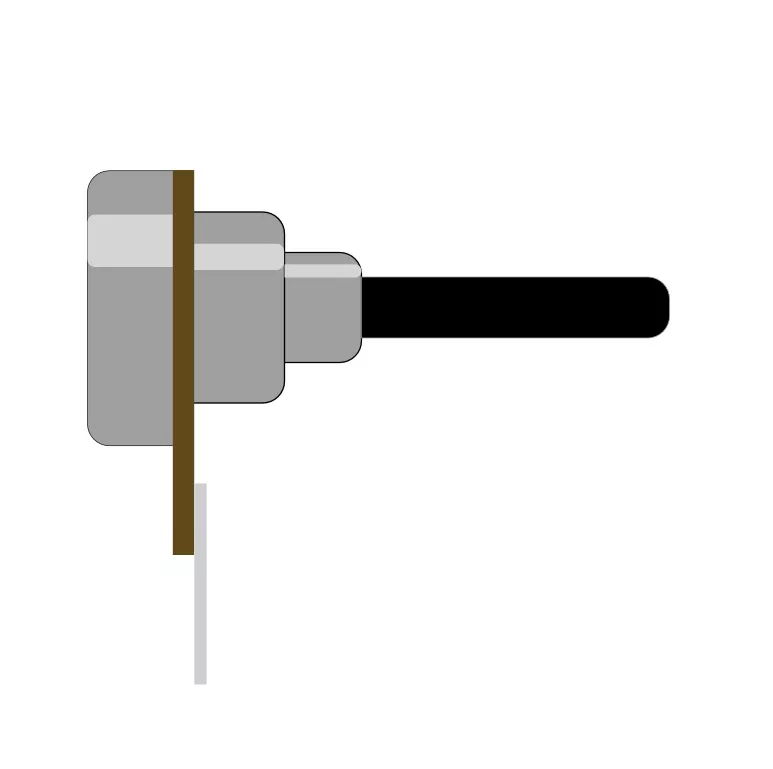 |
| 3mm Red LED | D1 | 1 | 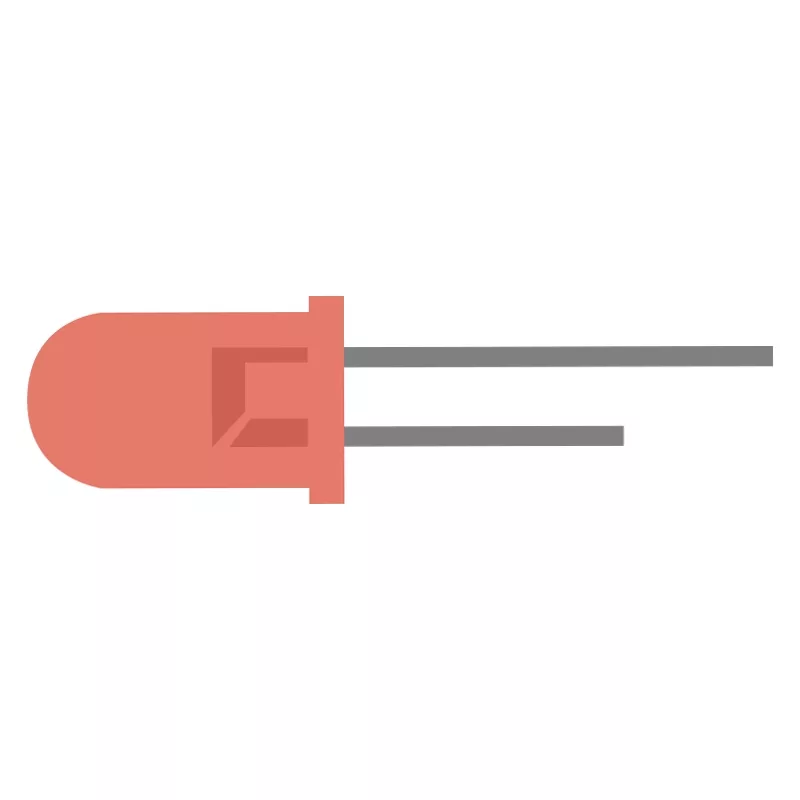 |
| PP3 Battery Connector | - | 1 |  |

The 555 astable circuit can be connected to an audio amp to produce a tone. The frequency of the tone depends on the position of the potentiometer, and thus can be used to create a basic synthesiser.
The output of the 555 astable can also be connected to additional analogue stages such as filters and delays to add interesting audio effects.

Some projects may require a digital clock source, and the 555 astable is perfect for this. While the square wave produced by the 555 astable is hardly symmetrical, many digital circuits do not care about this.
One example of where the 555 astable can be used is the 4017 Johnson Counter Light Chaser. The 555 can provide a rhythmic pulse which causes a line of LEDs to turn on one after the other.
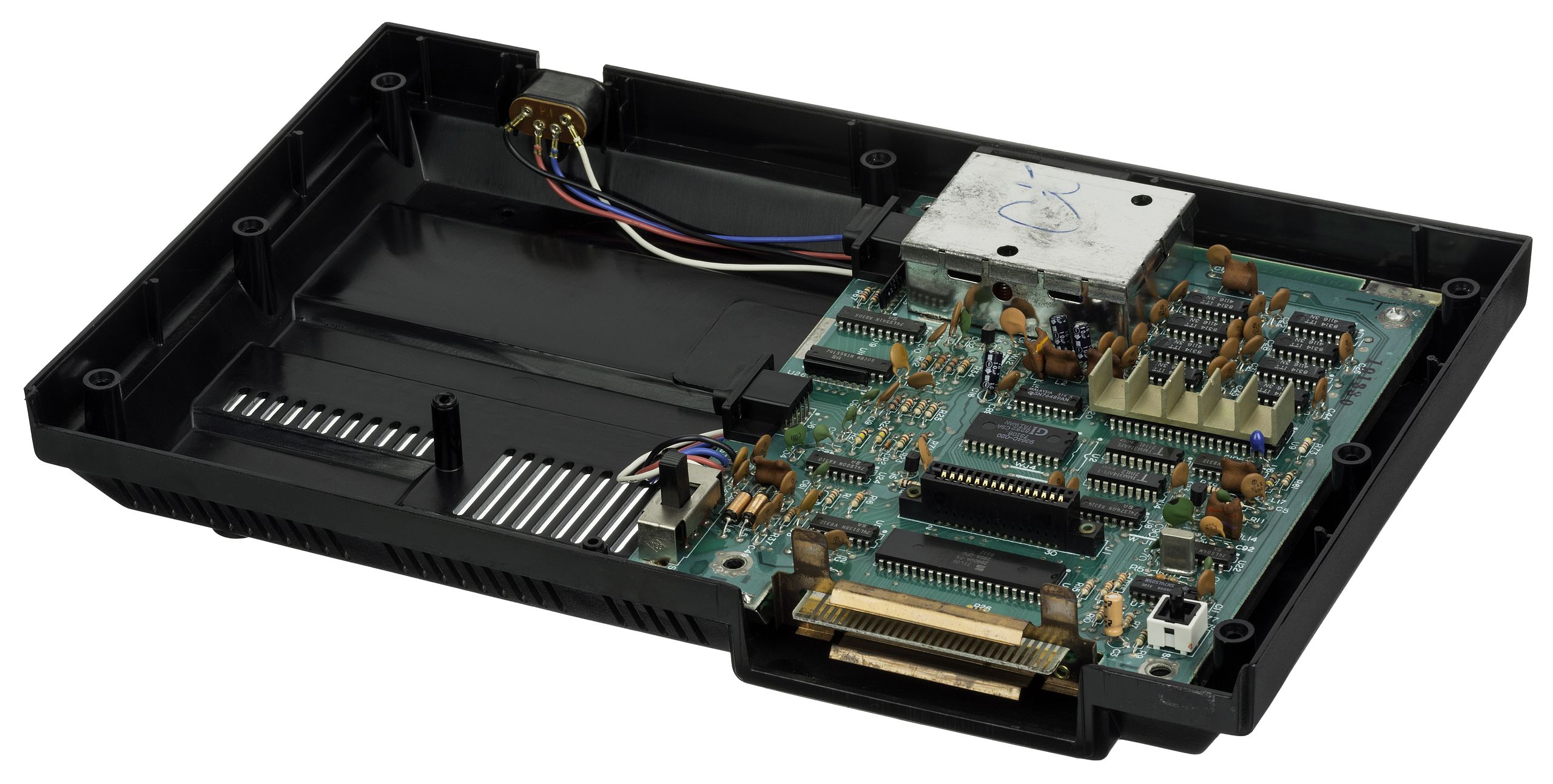
A more basic use of the 555 astable is for an indicator. A bicycle can have a 3-position switch installed on the handlebar that selects left, right, and no indicate. Two 555 astable circuits can be connected to both of these switches along with some orange indicators to create the blinking effect found on cars.


To learn more about how to solder electronic components, download the Electronics Construction Manual free using the button below
Electronics Construction Manual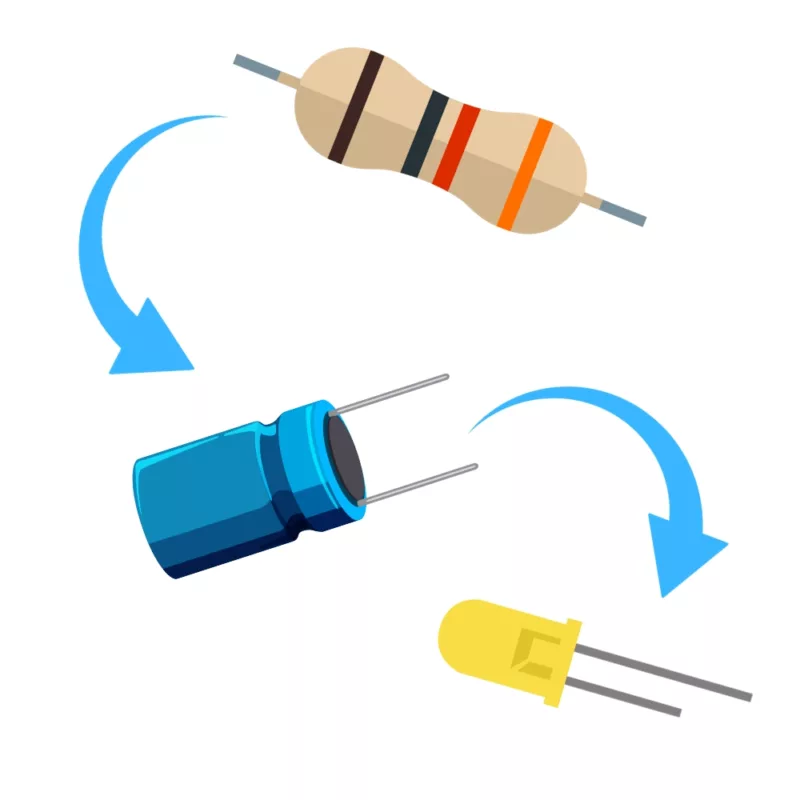
When soldering components, it is essential that you do so in a particular order, so that it is easy to add components and get to their legs. Generally, you always start with the smaller components (such as resistors and capacitors), before moving onto the larget parts (potentiometers and ICs).
Soldering Guide
Feeling brave? Consider using different resistors and capacitors
Can be done to build a 555 oscillator with a different frequency range